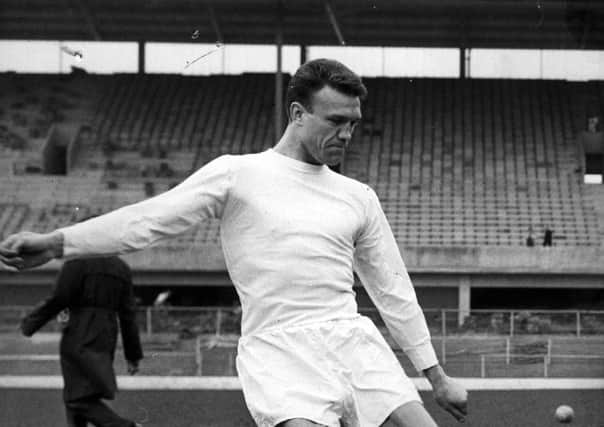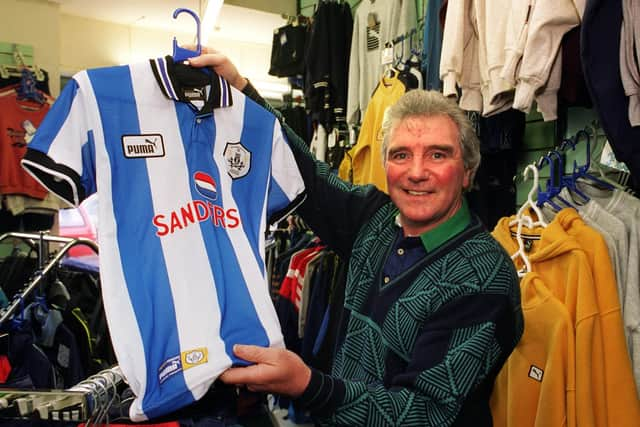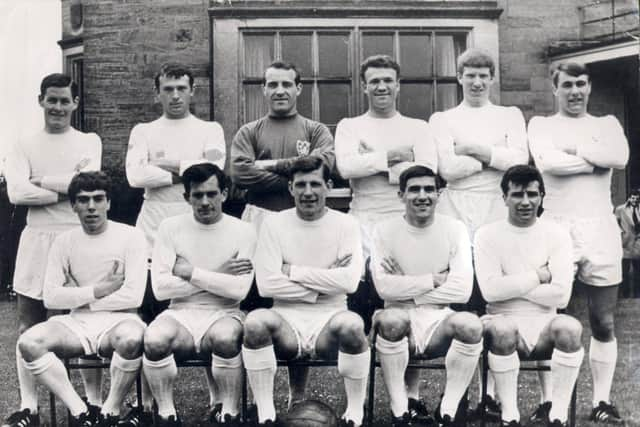Gerry Young and Johnny Quinn - a fond farewell to two of Sheffield Wednesday’s football legends


The mid-1960s were a difficult time for the Owls, mired in what is probably still the biggest betting scandal in English football.
In 1966, the FA Cup final was still a very big deal – although it would not be the most important match Wembley hosted that summer – and Wednesday’s involvement showed the South Yorkshire club had emerged from the controversy.
Advertisement
Hide AdAdvertisement
Hide AdThe versatile Gerry Young and Johnny Quinn played important parts in the revival and it says much for the former that even the decisive slip which led to his side’s 3-2 defeat was not held against him.


Nearly two years Young’s junior, Quinn left Wednesday for Rotherham United in 1967, but the pair were reunited when they bought a shop together with Peter Eustace on Middleton Road. This month, the pair died weeks apart, still held in high esteem by Yorkshire football supporters of a certain age.
South Shields-born Young was spotted playing as a centre-forward for a shipyard team and brought to Hillsborough in 1955 at the age of 18. When he broke into the first team two years later, he was seen as an inside-forward.
In his early days, he scored two famous hat-tricks. A 5-1 win over a Manchester United side featuring the uncompromising tackling of Nobby Stiles was a highlight on the path to finishing second in the 1960-61 First Division behind Tottenham Hotspurs’ double winners. That qualified Wednesday for the Fairs Cup, where he scored another hat-trick against Roma to set up one of the great days in the club’s history as they beat Barcelona 3-2 in their quarter-final first leg, only for the Catalans to overturn it at the Nou Camp.
Advertisement
Hide AdAdvertisement
Hide AdIt was a future Barcelona manager who would transform Young’s career. December, 1962 would be a hugely significant month for Young and his club.


That was when Vic Buckingham sold left-half Tony Kay to Everton and moved Young back as his replacement, but not before Kay, centre-half Peter Swann and striker David Layne had bet on the Owls to lose to Ipswich Town.
When the scandal – which went beyond Sheffield Wednesday – came to light in 1964, all three were jailed for four months and received lifetime bans, although they were overturned in 1972, when Swann pulled on the blue-and-white stripes again.
To lose Kay and Swann from the defensive unit in such a short time could have been disastrous, but Young had impressed enough in his new role for Alf Ramsey to hand him an England debut against Wales in November, 1964.
Advertisement
Hide AdAdvertisement
Hide AdYoung never added to that cap, forced to pull out of December’s game against the Netherlands with a ruptured thigh which ruined his season. He could not have asked for stiffer competition for the No 6 shirt. The previous summer, Ramsey had chosen Bobby Moore as his captain.
At club level, though, Young was a fixture, playing 80 consecutive games in Kay’s old shirt. In Swann’s absence, he struck up a formidable defensive partnership with Vic Mobley which took the club to Wembley in 1966. Young played every match of the run but Mobley made way for a young Sam Ellis in the final.
It was Young’s mistake, failing to control a long ball, which allowed Derek Temple to dispossess him and win the final 3-2 for Everton.
It was ironic that a man known on the terraces as ‘Mr Reliable’ would be responsible, but Young had more than enough credit with his supporters who took to his rugged features, dependability and a commitment which extended to catching a train to Birmingham so he could play for the Owls on his wedding day.
Advertisement
Hide AdAdvertisement
Hide AdAfter 344 appearances, he retired a one-club man in 1970-71 and went on to be reserve- and first-team coach, then caretaker manager, not leaving until Steve Burtenshaw’s sacking in July, 1975. He also had a short spell coaching Barnsley.
Like Young, Wednesday’s left-winger on Cup final day was not from Yorkshire but became an adopted son. Quinn was also a cult hero of many facets.
Spotted playing for Prescot Cables as a schoolboy, Quinn moved to Hillsborough in 1959 and played in every position but goal and centre-half, scoring 24 times in 194 appearances.
He also played for Rotherham United, Halifax Town – whom he also managed – and Worksop Town, served with the Royal Signals and even had his own terrace theme tune, thanks to Manfred Mann’s 1968 hit The Mighty Quinn. Perhaps the most important team he played for was the “Johnny Quinn’s All Stars” he set up to play charity games, raising hundreds of thousands of pounds.
Advertisement
Hide AdAdvertisement
Hide AdDespite playing his part in the second-place finish in 1960-61, Quinn’s early seasons at Hillsborough were disrupted by two years’ national service as a physical training instructor with the 11th Signal Regiment at Catterick in the early 1960s.
He dropped down a division when Tommy Docherty paid the Owls £27,500 to make him his first Millmoor signing in November, 1967, and established himself as a skilful right-half and captain.
His career probably ought to have been ended by a ruptured Achilles tendon but after 18 months out, he doggedly refused to accept defeat, making 124 appearances in all for the Millers.
He took the Halifax captaincy, too, after joining in the summer of 1972, and when manager George Mulhall was sacked in 1974 he became player-manager.
Advertisement
Hide AdAdvertisement
Hide Ad“If I feel it is too much for me after the next fortnight then I will let (the board) know,” he said.
Having retired from playing in February, 1975, he was dismissed less than a year later with the club 18th in Division Three. “They couldn’t have sacked a nicer guy” ran the headline in the Halifax Courier.
Supporters were angry, claiming the board had gone behind Quinn’s back, and Halifax finished the season bottom of the table.
Quinn finished his career as player-manager of non-league Worksop.
Advertisement
Hide AdAdvertisement
Hide AdHis five years at Millmoor had a big impact on team-mate John Breckin, who tweeted after his death aged 82 and following a lengthy illness that Quinn was: “a great player and gentleman... a true legend.”
“Gentleman” was the word which kept cropping up in the tributes.
Neither Quinn nor Young won a major trophy during their careers – though Young would go on to sell them after setting up his sports shop with Quinn – but both could lay claim to something more valuable: the admiration and respect of peers and supporters alike.
Support The Yorkshire Post and become a subscriber today.
Your subscription will help us to continue to bring quality news to the people of Yorkshire. In return, you’ll see fewer ads on site, get free access to our app and receive exclusive members-only offers.
Advertisement
Hide AdAdvertisement
Hide AdSo, please - if you can - pay for our work. Just £5 per month is the starting point. If you think that which we are trying to achieve is worth more, you can pay us what you think we are worth. By doing so, you will be investing in something that is becoming increasingly rare. Independent journalism that cares less about right and left and more about right and wrong. Journalism you can trust.
Thank you
James Mitchinson
Comment Guidelines
National World encourages reader discussion on our stories. User feedback, insights and back-and-forth exchanges add a rich layer of context to reporting. Please review our Community Guidelines before commenting.